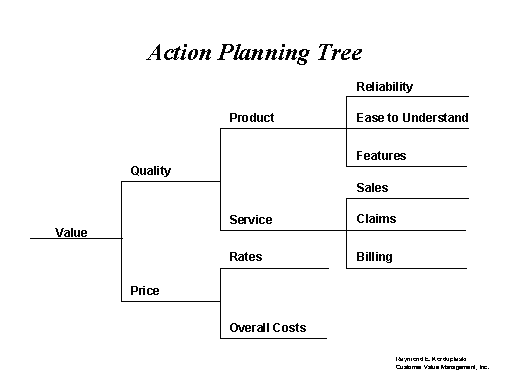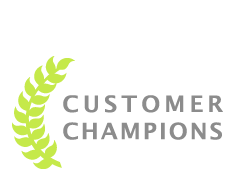Net Promoter Score (NPS) – a balanced view
Introduction
For some time now there has been much hype and hopeful news that Net Promoter Score (NPS) was perhaps after all the Holy Grail of customer satisfaction measurement: one single question with a link to business KPIs. Yet over time the number of sceptics has grown, and they have become more vocal. As professionals that have worked with clients using NPS and other customer satisfaction metrics, we would prefer to take a more balanced view of NPS. We also decided to discuss this view with our associates in the United States and AsiaPac region so we could get a global perspective and draw up the advantages and disadvantages of NPS, with special consideration given to NPS as a predictor of future customer loyalty.
Brief reminder of what NPS is
Let’s start with a basic description of what NPS is. With an increasing recognition that measuring satisfaction on its own wasn’t enough of an indicator of customer loyalty, Fred Reichheld of Bain and Co undertook some research with Satmetrix. The outcome of this was that they believed the single question that needed to be asked was “What is your likelihood to recommend company X to a friend or colleague.” Depending upon the response to that single question, using a scale of 0 to 10, the respondent would be considered one of the following:
| Score | Category |
|---|---|
| 0-6 | Detractor |
| 7-8 | Passive |
| 9-10 | Promoter |
To obtain the actual NPS score the percentage of Detractors was deducted from the percentage of Promoters.

The illustration below taken from Fred Reichheld’s own material shows the distribution of NPS scores for North American companies.

What are seen as its greatest strengths?
The description above of what NPS is illustrates two of the greatest advantages of NPS in that it is easy to understand and how easy it is to calculate. Both are clearly important attributes when considering the communication of customer loyalty both within the organisation and also externally. In turn, this easy communication will aid its ability to drive the message of how important customers are right across the business – an extremely valuable message, and one that NPS can help with.
Perhaps the greatest advantage of NPS though was that when it was launched and subsequently widely promoted, the claim was that the research showed that there was a strong link between an NPS score and business growth. This was purported to be the single best predictor of future customer loyalty behaviour. In fact Reichheld at the time claimed that it was much more significant in determining company growth than the following measures / description of a supplier:
- Satisfaction
- Sets standards of excellence
- Deserves my loyalty
There was constant referral to data sources that were analysed to come to these conclusions, so it appeared to be supported by thorough data analysis.
This analysis backed by the name of Bain & Co ensured that it quickly became an industry accepted standard for predicting customer loyalty and therefore company growth. This acceptance meant that senior management began to instruct their teams that this was the measure that they wanted, and the customer satisfaction teams knew that they would get little resistance if they suggested that their organisation adopted NPS as the key metric of customer loyalty. There was clearly a snowball effect of endorsements.
Other potential advantages NPS was offering were:
- In this single measure you were able to cover the complete customer experience – both physical (arrive on time etc) and emotional (customer experience)
- As there was only a single question the cost of fieldwork would be greatly reduced, in fact organisations questioned why they would need professional research agencies to ask and analyse a single question
- It had a positive impact on respondent’s time being surveyed, therefore organisations should receive higher participation rates
So clearly there are potentially a significant number of advantages to using NPS, but we also need to consider some of the potential disadvantages of NPS in order to gain a more complete picture.
What potentially are NPS’s disadvantages
We believe that the biggest single disadvantage of the NPS approach is the crucial lack of ability to identify and act upon driving factors behind customers’ responses to the question. There is little point in asking customers for their views unless you are able and willing to act upon the answers you obtain. In researching for this article we looked at this issue of actionability and visited the website www.netpromoter.com. Within this site there is a section entitled “How to improve your score”, but the advice is very limiting. It not surprisingly says to focus on removing / reducing the number of customers who are Detractors and Passives by moving them up the scale to convert them to Promoters. An admirable intent, but in order to do that you need to understand what drives customers’ views on recommendation.
Having worked with clients who utilise NPS it was very apparent for the need to ask supplementary questions that would help understand the drivers and what actions were required. Whilst there clearly needs to be a balance between asking customers too many questions and looking to minimise the interviewing time, the extreme of a single question appears to us to be too biased towards the customer and not the organisational needs. If the organisation can’t do anything due to the lack of data the customer will ultimately become frustrated due to the lack of change and will take their business elsewhere. This need for additional research appears to negate many of the advantages of NPS raised earlier.
Another disadvantage of NPS that is frequently raised by clients using NPS in a global market is: how does it allow for cultural differences in using scales. In some countries the culture more freely allows for giving a 9 or a 10, where in some others this would be perceived as truly exceptional circumstances and providing a rating of 8 may be considered “the best you’re going to get”.
NPS may not also be relevant for your market and your customer set. Certainly within a B2B environment we often find that a small number of very large customers dominate the business’ income, and therefore the use of a single recommendation score may not be the most effective tool.
Finally 2007 saw the release in the UK of research findings that question the very validity of the link between NPS and company growth, and NPS as a predictor of future customer loyalty. If this foundation stone of NPS is seen to crumble who knows what the impact will be on the house of NPS!
What about if my company is already committed to NPS?
As NPS has gained in credibility over recent years there has increasingly been a top down approach to using this measurement e.g. Management have dictated that this is the measure that they want. So the team responsible for delivering the metric may well have their hands tied. There is also the potential issue of the need to continue to track and report NPS for continuity.
The solution is to combine the NPS score, as it is only one question, with other customer metric tools that are more focused on identifying what actions need to take place to improve the customer experience. Combining two tools is not an ideal solution but it is a practical one and something that should be considered by companies finding themselves in this situation.
Are there any proven linkages between other research concepts and NPS that can fill this “actionability” void?

This is a question that we presented to Ray Kordupleski in the US, and the answer is yes. A well known and used concept called Customer Value Management correlates well to Customer Loyalty as measured by NPS. In Ray Kordupleski’s book, “Mastering Customer Value Management” he presents the slippery slope concept, which shows how different levels of customer satisfaction with the value received correlates to increasing or decreasing loyalty. In the example shown below a value rating of 7.2 would yield an NPS score of 0. Using this chart the company can determine what value rating they needed for different NPS objectives.
Once that was determined, by analysing the few additional questions on the value survey, and the resulting value tree (illustrated below), the company can determine the product, service or price factors they need to improve to increase the value and attain the desired customer loyalty.

This US view also gets reflected “down under” with Rodger Gallagher, MD of Customer Value Management NZ Ltd, commenting that “New Zealand business leaders seem to have read the fine print in Fred Reichheld’s articles and feel that NPS doesn’t apply so effectively in business-to-business situations”. Gallagher says, “We see that NPS is ideal for very small retail businesses. With a few other questions added to give some guidance on ‘the why and how to improve’, NPS provides useful information on a low budget. This type of business does not need to systematically improve processes. For larger organisations in a business- to-consumer market we are able to build econometric models from the drivers of value right through to NPS. One question like NPS doesn’t provide the rigour and information demanded by large clients.”
In summary
NPS is extremely attractive to a management team as it is a single number that appears, at least initially, to be linked to some significant KPIs. However there are now papers claiming evidence that the original research does not hold up. It has the credibility of being associated with a customer loyalty guru and Bain & Co. Yet, although it may provide a headline figure, it does not provide the necessary tool-kit for companies to know what to do to influence the score, and after all if you can’t do that what is the point of asking the customer for their opinion! It would seem the answer is to combine the simple NPS question with another technique that will provide actionable findings.
Take the next step
To discuss Net Promoter Score in relation to your company, get in touch with Customer Champions today.
If at this stage you would simply like some support in developing a brief to introduce Net Promoter Score to your organisation we can provide some guidance.
Co-authors are Professor Bruce Cooil of Vanderbilt Owen Graduate School of Management (USA), Tor Wallin Andreassen of the Norwegian School of Management (Norway), Lerzen Aksoy of Koc University (Turkey), and Tim Keiningham author of Loyalty Myths (USA).

